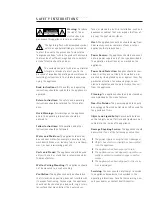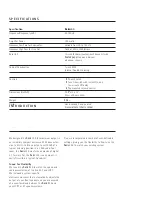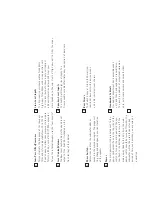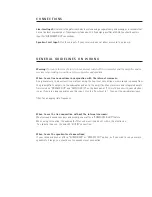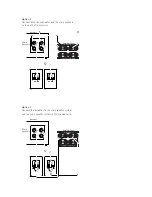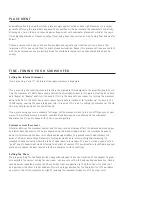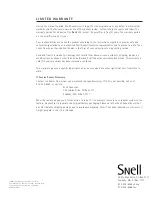
P L A C E M E N T
Subwoofers often are smoothest when placed snugly against a side or back wall. Placement in a corner
generally offers up the smoothest response. These positions will also increase the subwoofers‘ sensitivity,
allowing you to run them at a reduced power. Experiment with subwoofer placement while at the same
time adjusting crossover frequency, output level, and phase. (See section on Fine-Tuning Your Subwoofer
below.)
Choose a source with a heavy and continuous bass line, repeat a short section until you have a firm
impression of it in your mind then try another speaker location. Repeat this process until you are content
with the bass response you are getting. Strive for a solid bass region with no undue emphasis on any fre-
quency.
F I N E - T U N I N G Y O U R S U B W O O F E R
Setting the Internal Crossover
If you are using a ”
sub in" the internal low-pass crossover is bypassed.
If you are using line-level inputs and returning the high-pass filtered signal to the amplifier, begin by set-
ting the crossover at 100Hz. Some rooms naturally overemphasize bass in this region, creating an undesir-
able ”bump“ or ”boomy“ quality in the sound. If this is the case with your room, try turning the crossover
down to 80Hz. On the other hand‚ some rooms have a natural tendency to ”swallow up“ the bass in the
100Hz region, causing the sound to appear thin. In rooms of this type, try setting the crossover at 125Hz.
This may help to round out the overall sound.
If you are running your main speakers full range, set the crossover close to the cut-off frequency of your
mains. This will help achieve a smooth, seamless blend between your speakers and the subwoofer.
Experiment until you are happy with the mix you are getting.
Crossover versus Bass Level
Interplay between the crossover control and the bass-level control can affect the balance between upper
and lower bass frequencies. If you are experiencing too much midbass, adjust the crossover frequency
down while increasing the bass level. While decreasing midbass, this procedure will also increase the
amount of lower bass energy. Conversely, turning down the bass level while slightly increasing the
crossover frequency will increase the ratio of upper bass to lower bass. The result will be a sound with a
”quick“ quality. Experiment while listening to a variety of sources. If the subwoofer is identifiable as a sep-
arate entity, reduce the bass level and further experiment with the settings.
Setting the Phase
The proper setting for the Phase Switch changes based upon the current location of the speaker. To prop-
erly ascertain the correct setting for your room, use a source with a full and continuous bass line. Have a
second person repeatedly switch the Phase Switch from one position to the other. You will notice that
one position will deliver a fuller midbass. This is the proper position for the Phase Switch. If the midbass
now seems too full, compensate by slightly lowering the crossover frequency or the output level.


